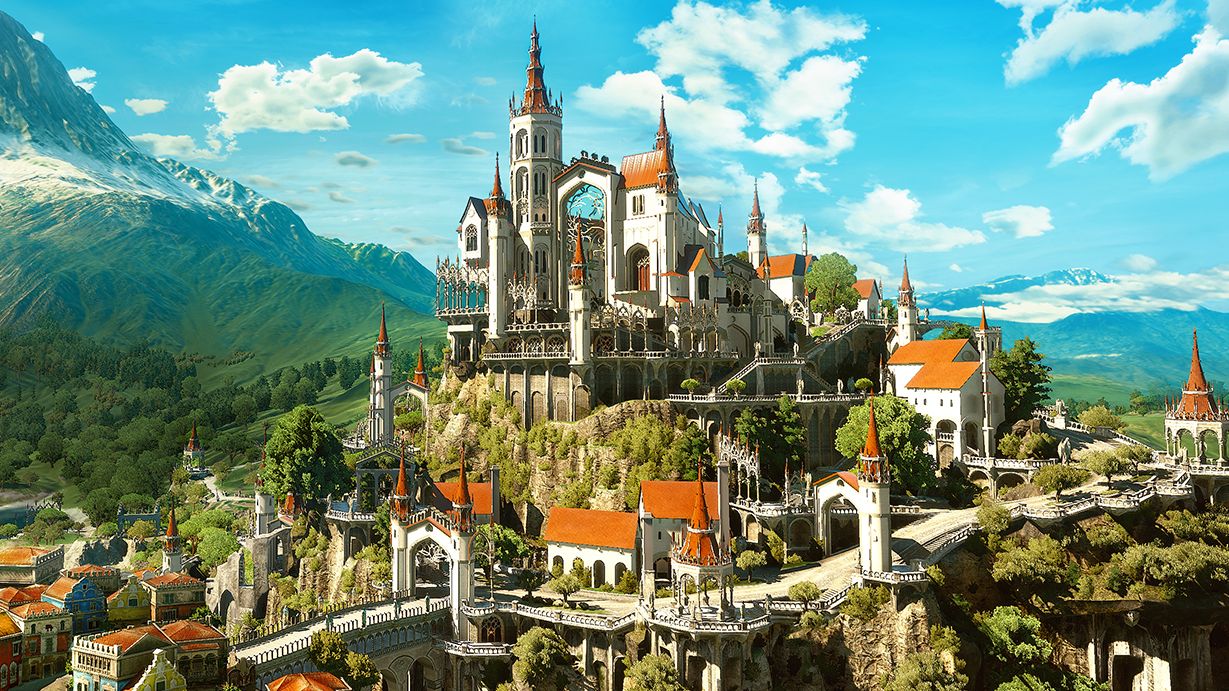The Witcher 3: Blood and Wine is a sprawling, exciting final expansion
Geralt turns his talents to a land of knights and chivalry.

Once upon a time, in a vineyard far, far away, there lived a grizzled old swordmaster. After a lifetime spent defeating hundreds of monsters, and thousands of random bandits, it was time for a rest. He would watch the countryside with a nice glass of expensive red, and swap stories about the Bloody Baron and the Witches of Velen with friends.
And so might have ended the saga of Geralt of Rivia. Fortunately for us, there is darkness in the gorgeous hills of Toussaint, the massive new zone added by the Blood and Wine expansion. It's a glowing pastiche of rural France, a land of chivalry, medieval fairs and shining golden armour. The people here love to eat, drink and be happy—when they're not being eaten by vampires, at least. A Witcher's work is never done.
Blood and Wine has an impressive stat sheet: 90 new quests, 20 new monsters, 100 pieces of armour, an upgradeable vineyard, new mutations. It feels like a proper extension of the main game, complete with a twisting core tale of royalty and monsters. The setup is simple: Duchess Anna Henrietta summons Geralt to Toussaint to solve a series of brutal murders, inducting him into an alien world of good wine and summer tourneys.

There's an entertaining friction between Geralt's personality and the Toussaint's lavish customs. It's a classic fish-out-of-water story told well. From Blood and Wine's opening moments, Geralt must wrestle with the florid language of the Duchess' protectors. Events conspire to force Geralt into a sunset festival at the Duchess' gorgeous castle. The guests scoff and laugh at his boorishness. Even the taverns of Toussaint are different. In one, the bartender is outraged when Geralt asks him for local gossip. On the way out, a man at a nearby table mutters to himself, “A well-composed pâté, I must admit!” We're not in Velen anymore, Toto.
Blood and Wine is a fine showcase for a team at the peak of their abilities. Characterisation is swift and vivid, and the laid-back tone contrasts well with the grim intensity of Velen and the lonely, beautiful crags of Skellige. In less than an hour I'm enjoying the company of the honourable duo, Palmerin and Milton. The Duchess is a no-nonsense problem-solving machine. Knight Guillant constantly performs daring deeds to impress a lady at court, but is completely useless at it. It's a brilliant balance of comedy, high-fantasy fun and darkened by sudden moments of violence.
I don't want to give any details that might spoil the plot, but the opening hours include a vineyard massacre and the discovery of a severed hand that is still alive. For all the merriment and sunshine of the new area, this is still The Witcher, where the monsters often have complex motivations. Tertiary characters are explored in greater detail in Blood and Wine's sidequests, which seem to be comparable in depth to The Witcher 3's chunky asides.

As Geralt tracks the prime suspect (a supposedly untrackable beast, wreathed in dark magic) he finds new ways to grow in power. The mutations system lets you research powerful ability modifiers, including one that allows Geralt's signs to register critical hits, causing affected enemies to explode. The telekenetic Aard thrust attack, in its mutated form, can freeze enemies to death. Combat mutations can affect killing blows, causing them to automatically dismember enemies. Another causes subsequent attacks to increase attack power—ideal for players that like to use flurries of light strikes. To achieve the most powerful build, you have to take Geralt into new game+, which raises the level cap to 100.
Keep up to date with the most important stories and the best deals, as picked by the PC Gamer team.
These powers can be researched with the aid of the master alchemy lab lurking underneath Geralt's vineyard home, gifted to him early in the expansion. There you can also spend money to have your aide—the excellently named Barnabas Basil—upgrade your weapon and armour racks. He can also build new features into your villa, such as grinding wheel for your swords and a garden for growing herbs. It's oddly touching that Geralt finally has a place to call his own, one without Kaer Morhen's traumatic past. Blood and Wine could be a happy ending for him, and based on the three hours I've played, should be a happy ending for Witcher 3 fans too. It's out on May 31.
Part of the UK team, Tom was with PC Gamer at the very beginning of the website's launch—first as a news writer, and then as online editor until his departure in 2020. His specialties are strategy games, action RPGs, hack ‘n slash games, digital card games… basically anything that he can fit on a hard drive. His final boss form is Deckard Cain.


